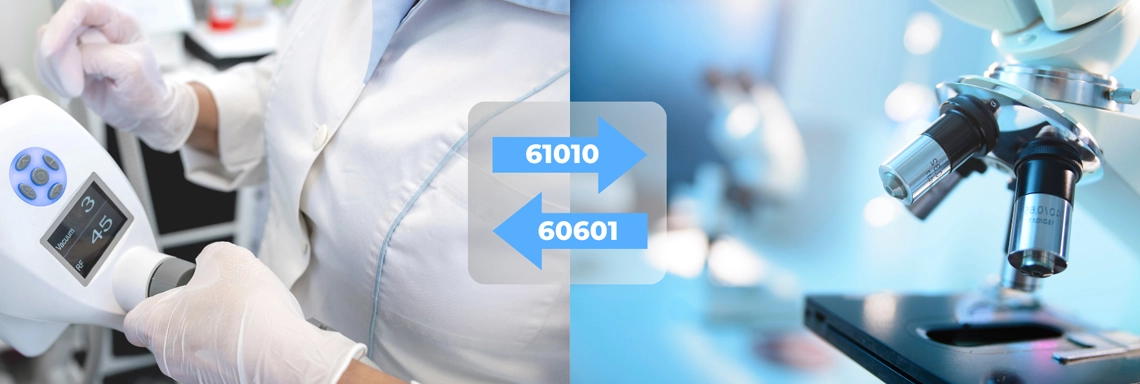IEC 60601 vs. 61010 Series, Product Certification for Medical and Laboratory Devices: Understanding the Distinctions.
In the product certification world, ensuring the safety and reliability of Medical and Laboratory equipment, among others, is of paramount importance. Two key standards series that govern these respective product categories are:
· IEC 60601 Series, Product safety & performance standards for medical devices.
· IEC 61010 Series, Product safety standards for electrical equipment for measurement, control, and laboratory use.
Certification bodies have the crucial role of discerning and articulating the nuanced differences between these standards and guiding manufacturers in achieving compliance while delivering high-quality, safer products.
IEC 60601 Series: Ensuring Patient Safety and Effectiveness of Medical Devices
The IEC 60601 series of standards is a comprehensive framework that addresses the safety and performance of Medical Electrical Equipment (MEE) and Systems (MES) with direct or indirect contact with patients. These standards are designed to safeguard patients, healthcare professionals, and other users from potential electrical, mechanical, and functional hazards associated with medical devices. Key areas covered by IEC 60601 include electrical safety, electromagnetic compatibility, mechanical safety, risk assessment, efficacy, and software safety.
One of the primary distinctions of IEC 60601 is its emphasis on patient safety. The standard considers the unique risks associated with medical devices that come into contact with patients, such as diagnostic equipment, therapeutic devices, and monitoring systems. Manufacturers seeking compliance must adhere to the standards’ requirements to minimize the potential for harm, considering factors like insulation, leakage currents, radiation, effectiveness, and device ergonomics.

IEC 61010 Series: Safeguarding Users in Laboratory Environments
In contrast, the IEC 61010 series focuses on ensuring the safety of laboratory equipment that does not come into direct contact with patients. The standard applies to a broad range of laboratory devices, including analytical instruments, testing equipment, and other tools used in research and diagnostic laboratories. The primary objective of 61010 is to mitigate electrical, mechanical, and other hazards that may pose risks to laboratory personnel in proximity to the equipment and/or property.
While patient safety is not the primary concern in 61010, the series addresses risks associated with electrical and mechanical features of laboratory devices. Compliance involves meeting criteria related to insulation, grounding, protective measures, and the prevention of electrical, fire, shock, and mechanical hazards.
Key Differences:
| Feature | 60601 Series | 61010 Series |
|---|---|---|
| Patient Contact | Directly addresses devices with patient contact. | Primarily focuses on equipment without patient contact. |
| Safety Emphasis | Places a strong emphasis on patient safety, effectiveness, and well-being. | Prioritizes the safety of laboratory personnel and those in proximity to the equipment. |
| Application Scope | Applicable to a wide range of Medical Electrical Devices and Medical Electrical Systems used in healthcare settings. | Applicable to electrical equipment for measurement, control, and laboratory use. |
Navigating the landscape of product certification for Medical and Laboratory devices requires a keen understanding of the distinctions between the IEC 60601 and IEC 61010 series of standards. As an accredited certification body, it is essential to guide manufacturers through the compliance process by first ensuring that the correct standard is applied (based on the product’s application) and then, by ensuring that the unique safety considerations of the applicable standard are met. By comprehending and applying these standards judiciously, we contribute to the development and deployment of safer, reliable, and effective medical and laboratory equipment in diverse healthcare and research settings.

